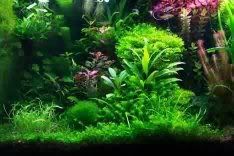 Honeysuckle growing tips
Honeysuckle growing tips
Honeysuckle have many varieties which are used for many different purposes. For example while Fly Honeysuckle and European Honeysuckle is used in Traditional Chinese Medicines for its antibacterial and anti-inflammatory properties, wood from Lonicera tartarica is used for making cat toys and woodbine for its sweet-scented, reddish and yellow tinted flowers.
Soil:Honeysuckle is a very hardy plant and it can grow in wide variety of soil types. But the best soil conditions for honeysuckle growth are moist and acidic soil. You can add organic composit into the soil to increase the moisture retention power of soil but make sure you don't overdo it since some variety flower poorly in high nitrogen content.Propagation:
Most variety of honeysuckle propagate easily by root cutting while the plant is not in flower.Some species are propagated from seed as well, but the difficulty of this varies from species to species. Most commonly cultivated species requires cold treatment and do best when planted outdoors in the fall, or started indoors in the refrigerator. Cold treatment period can vary from 2 to 4 months. Most honeysuckles also propagate themselves by a process called layering (their stems spread across and root in the soil), developing a sprawling complex of shrubs and suckers if left unchecked.
Care:
- Honeysuckle grows best in moist soil, but it is also heat and drought tolerant.
- Though plant is also cold tolerant but mulching would help improve moisture retention, and will help protect plants growing near the limit of their range.
- Plant should be placed in a partially shaded area for first 1-2 year but should be moved to full sun after it gets established.
- One reason for less quantity of flowers is lack of full sun. Other reasons are high nitrogen content of the soil.
Aphids are a major problem, attacking plants whose roots become too dry. These pests transmit a virus that will weaken and eventually kill honeysuckle. To control them, use a spray or grow the plants so their feet are in shade and their head in the sun.
Pruning:
Pruning is best done immediately after flowering has ceased (early to mid fall for many species). Some shrubby species should have older woody stems removed on a regular basis in order to promote a healthy, full appearance. Vining or climbing honey suckle should only be pruned as is needed. Avoid pruning in first two years.
Honeysuckle is on the list of the top 10 most invasive non native plants for the state of Ohio. One of the variety- - bush honeysuckle, spreads by berries. Once bush honeysuckle gets started, its invasive actions take over, and actually eliminate any other low growing shrubs and vegetation trying to grow around it.
There are 3 basic ways to get rid of bush honeysuckle:
- Physically dig them out. Younger plants, with good soil moisture, will pull out fairly easily.
Honeysuckle roots are generally close to the surface of the ground. Or, take a sharp spade and
dig them out, making sure you remove the center crown of the plant’s roots. If you get rid of this
crown, typically they wont re-grow from the remaining roots. - For larger plants, simply cut the plant off at ground level and immediately treat the freshly cut
stump with concentrated Roundup, straight. Do this as soon as you make the cut, or the stump
will seal over within a couple hour period. If next year it sends up sucker growth, spray immedi-
ately with Roundup. - Try using The Honeysuckle Popper available in many shops developed specifically for
popping out the center crown of the honeysuckle. It uses leverage action to exert over 1500
pounds of upward force under the root crown, and pops the plant right out of the soil, thus the
name Honeysuckle Popper.
Cool facts about Honeysuckle:
Family: Caprifoliaceae
Genus: Lonicera (luh-NIS-er-a)
Species: caprifolium (kap-rih-FOH-lee-um)
Category: Vines and Climbers
Height: 15-20 ft. (4.7-6 m)
posted in Monsoon Season Series
Tags: honeysuckle, growing tips, monsoon season plants, lonicera, woodbine
welcome to Plants for Monsoon Season Series
Monsoon is one of the best time to grow new plants in your garden. With the higher humidity, cloud cover and rainfall, plants have an easier time getting established after planting. Summer was harsh on both plants and gardeners. But With rains around the corner, every gardening enthusiast can relax a little. At last, your plants won't need anxious watering, protection from hot winds and blazing sunlight. And what with rain water full of essential nutrients, your plants are in for a long treat. Now that rains are finally here we have many more options for our garden.
This is the best time to plant a flowering shrub or tree. Fruit bearing trees can also be planted during monsoon season with ease. The ground is soft and moist and easy to turn, and the new plant gets a chance to settle in, without having to face the heat of summer or the onslaught of too much rain and too much water-logging in the soil.
Monsoon Season Series
- honeysuckle - one of the most beautiful and fragrant of climbers.
Tags: monsoon, garden, monsoon plants, plant tips, honeysuckle
